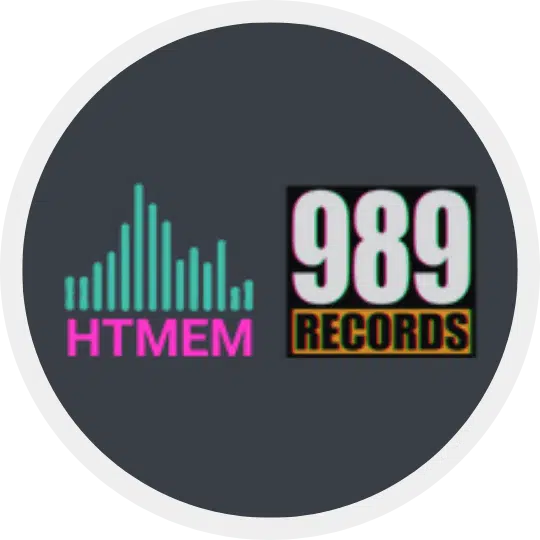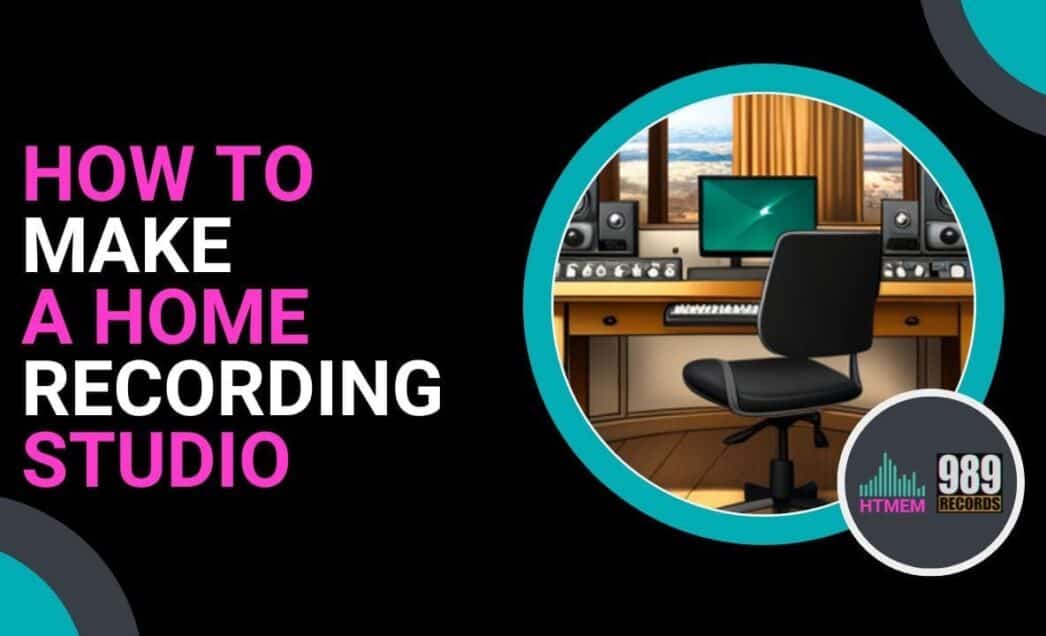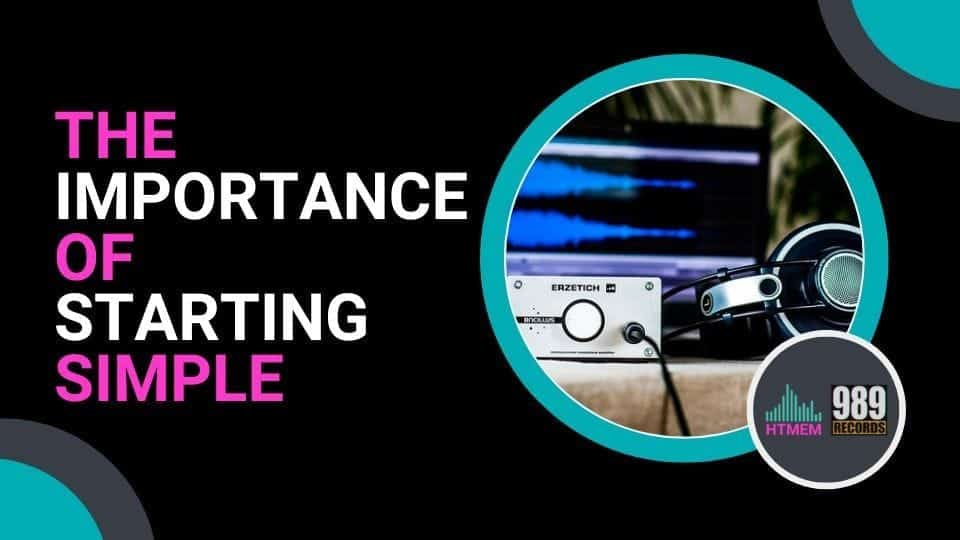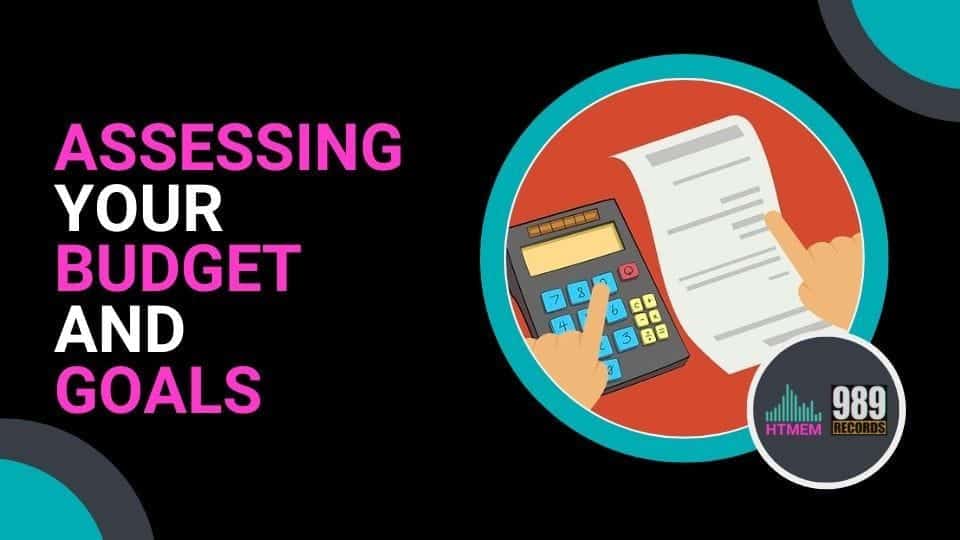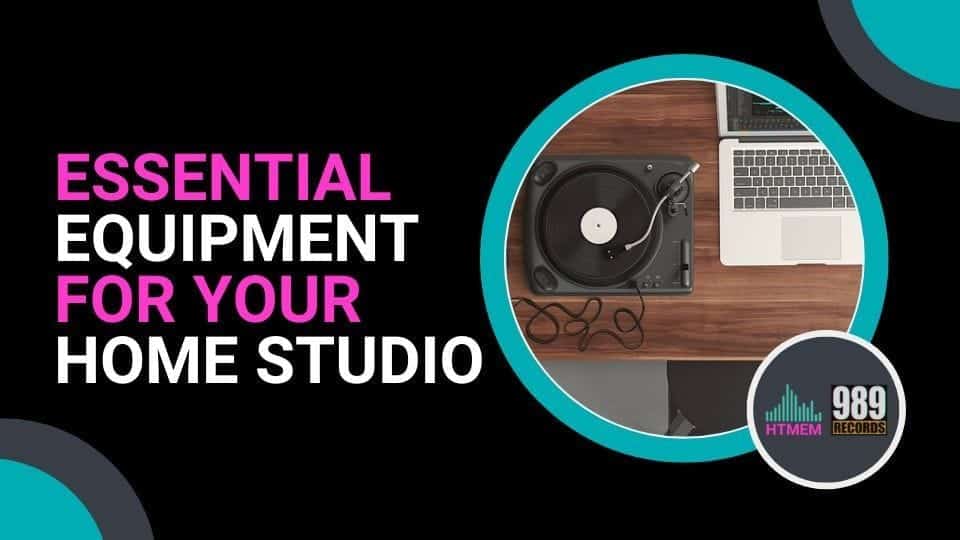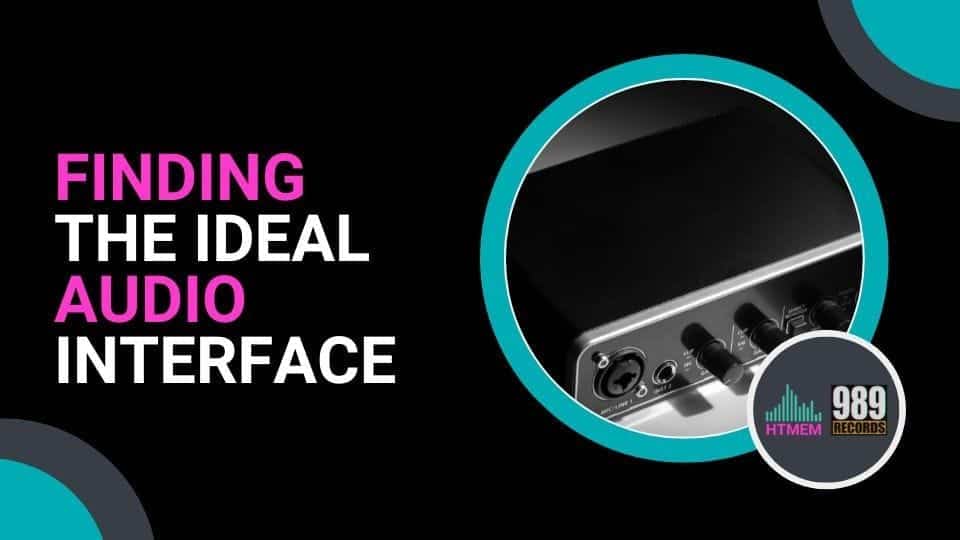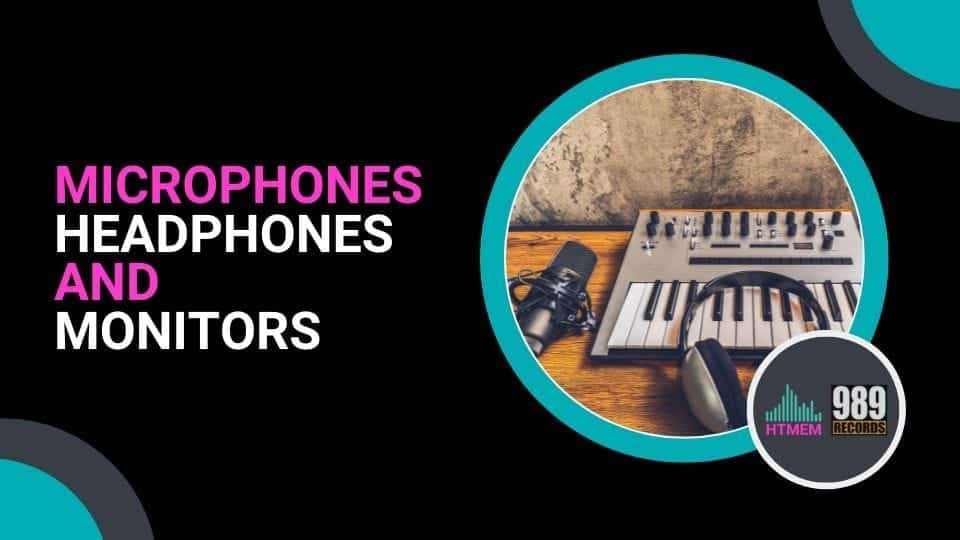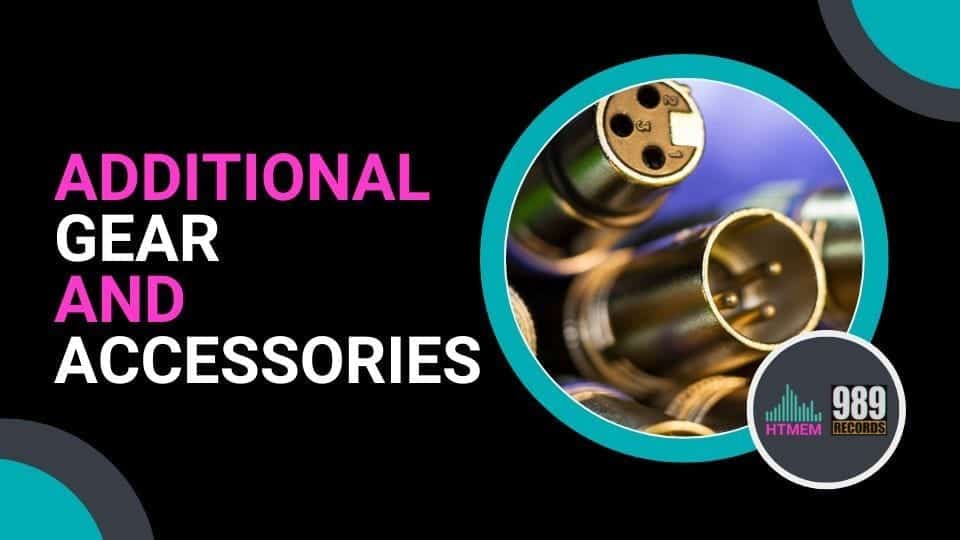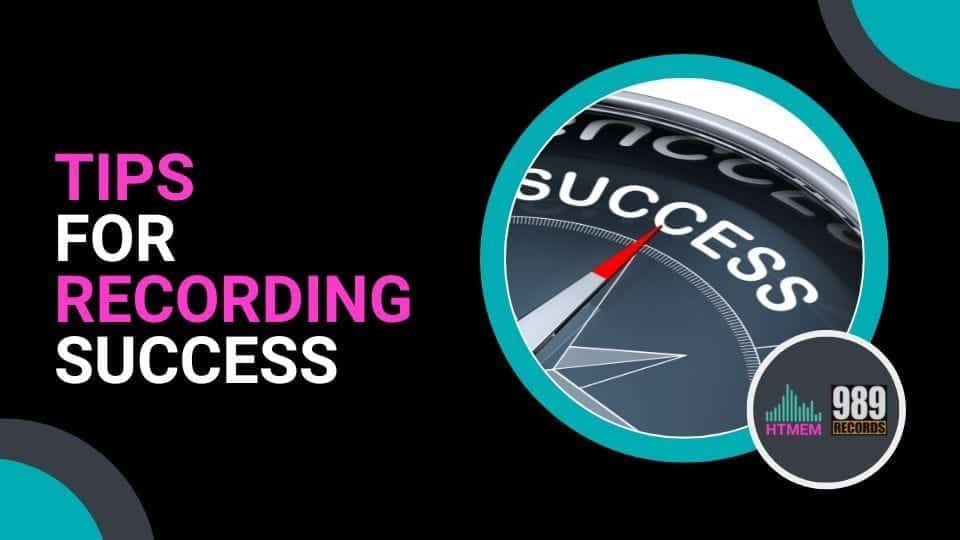Hey, welcome to the HTMEM Blog.
Have you ever dreamed of producing your own music, but the thought of setting up a recording studio seemed too daunting?
Fear not! We are here to help. In this blog post, we will guide you through a step-by-step process, even if you’re a beginner. We will tell you everything you need to know about setting up a home recording studio, from basic equipment and software to tips for achieving the best sound.
With a few essential components and some helpful tips, you’ll be well on your way to making music in your own personalized space.
Are you ready? Let’s get started!
Key Takeaways
- Starting simple is essential when building your recording studio.
- Assessing budgets and goals, choosing the right space, and investing in quality equipment is key to achieving superior sound quality.
- Adopting good practices such as ear training & proper maintenance will ensure successful recordings in your home studio.
The Importance of Starting Simple
Embarking on your home recording studio journey can be an exhilarating adventure, but starting with a simple setup is key.
A straightforward, effective home recording studio with essential components can prevent you from feeling overwhelmed and allow you to focus on mastering the fundamentals.
The affordability of home recording studio equipment has revolutionized the way artists create and distribute their music, making it more accessible than ever to set up your own music studio.
With the right approach, you can build a solid foundation for your recording space and gradually expand as you gain experience and confidence.
Starting simply allows you to familiarize yourself with the entire process, steering clear of unnecessary investments in pricey outboard gear.
Assessing Your Budget and Goals
Before embarking on your studio construction, evaluating your budget and objectives is vital.
Considering your financial circumstances and desired outcomes, such as recording vocals or electric guitar amps, will help you prioritize expenses and make informed decisions when selecting equipment.
Whether your goal is a simple setup for personal music recording or a professional setup for mixing and mastering others’ work, a thorough comprehension of your budget and aims guarantees appropriate investment in the necessary equipment.
This will ultimately contribute to achieving the best-recorded sound possible in your music studio.
Choosing the Right Space
The chosen space for your home recording studio significantly impacts your recordings’ quality. Factors such as room size, shape, and noise levels should be taken into consideration.
Square rooms, for instance, should be avoided, as they can lead to null points where frequencies are canceled out due to reflections from parallel walls, resulting in unpleasant empty spots in the sound.
A suitable desk for your home studio should have the following features:
- Cable Management Solutions
- Wire Concealing Holes
- A MIDI Keyboard Tray
- Rack Gear Space
- An Extra Speaker Shelf
In addition, make sure you have enough floor space to accommodate all your equipment.
Acoustic treatment is vital for attaining a superior listening experience in your home recording studio.
Treating your space with materials like:
- Foam Panels
- Rockwool
- Glass Wool
- Acoustic Foam
can reduce sound reflections and improve the overall listening experience.
Investing time and effort in selecting and properly treating the right space brings you one step closer to creating music that meets all expectations.
Essential Equipment for Your Home Studio
Having chosen the ideal space for your home studio, it’s now time to turn your attention to the fundamental equipment that will underpin your music production.
At the core of any studio setup are a computer, a Digital Audio Workstation (DAW), and an audio interface.
These components are crucial for the recording and production process, as they enable you to capture, edit, and mix your musical creations.
When selecting the right equipment for your own studio, it’s important to consider your studio needs and preferences.
Selecting a Computer
The computer is the primary element of your home recording studio, and choosing one with adequate processing power, RAM, and storage is essential for a smooth music production experience.
Both desktop and laptop computers have their advantages and disadvantages, with factors such as mobility, budget, and the possibility of self-building to consider when making your choice.
Optimal performance can be achieved by installing the following components:
- Solid State Drive (SSD) as the primary drive for the Operating System (OS)
- Hard disk drive (HDD) for secondary storage
- Minimum of 8GB RAM
- 4-core processor
Investing in a computer with these specifications lays a solid groundwork for your studio.
Picking the Perfect DAW
A Digital Audio Workstation (DAW) is the predominant software for recording and producing music on a computer. Selecting a DAW that aligns with your workflow and budget is integral for a frictionless music production experience.
There are various options available, including:
- Steinberg Cubase
- GarageBand (free version)
- Pro Tools
- FL Studio
- Ableton Live
- Logic Pro
When selecting a DAW, it’s important to consider factors such as functionality, user interface, and workflow.
The best way to determine which DAW is most suitable for you is by investing time and trying out different options until you find one that aligns with your needs and preferences.
Finding the Ideal Audio Interface
An audio interface is a crucial component of your studio setup, as it enables you to connect microphones, instruments, and other gear to your computer.
When selecting from various audio interfaces, consider factors such as:
- The number of inputs and outputs required
- The possibility of recording a full band or multi-mic drums
- The potential for sacrificing clean preamps to save on costs
There are various audio interface options available, such as budget-friendly options like the Behringer Uphoria, Focusrite Scarlett, and Steinberg UR series, as well as high-end choices like the RME Babyface and UA’s Apollo.
Selecting an audio interface that fulfills your input/output requirements and is compatible with your chosen DAW paves the way for a triumphant studio setup.
Check Our Beginner’s Guide: Everything you Need to Know About Production of Music
Microphones, Headphones, and Monitors
Microphones, headphones, and studio monitors are crucial components of a studio, as they enable you to capture and monitor sound accurately.
This section will explore the various microphones, headphones, and studio monitors on the market, providing guidance on choosing the optimal options for your recording needs.
Microphone Selection
Selecting the right type of microphone is essential for capturing high-quality recordings in your home studio. There are three primary types of microphones:
- Dynamic mics: These are robust and can be used in both studio and live performance environments.
- Condenser microphones: These are best suited for recording vocals and require 48 volts of phantom power to operate.
- Ribbon microphones: These are the most delicate of the three and typically have a darker tone.
For beginners, it’s advisable to start with a general-purpose microphone and a more specialized one to handle various recording situations.
Shure SM57, SM58, and Audio Technica AT202 are some of the most popular workhorse microphones.
They have been in use for many years and offer reliable performance.
Studio Headphones Choice
Choosing the right headphones for recording or mixing in your studio is crucial for accurate sound monitoring.
There are two primary types of headphones: closed-back and open-back.
Closed-back headphones provide sound isolation, allowing musicians to hear both the backing track and their instrument as they record while preventing sound leakage from the headphones into the microphones.
Some popular closed-back studio headphone options include the Audio-Technica ATH-M50x, which is highly regarded among audio professionals and suitable for both recording and mixing. The AKG K240 is another commendable option worth considering.
Choosing suitable studio headphones guarantees clear recordings devoid of undesirable noise.
Studio Monitor Essentials
Investing in high-quality studio monitors is crucial for achieving an accurate representation of sound during the mixing and mastering process.
Studio monitors, unlike consumer speakers, are designed to provide a neutral sound, allowing you to make informed decisions about the quality of your recordings.
Ensuring proper positioning and placement of your studio monitors is essential for achieving optimal sound quality. If you want to know something more about monitor placement and calibration, have a look at our dedicated course here
Investing in studio monitors that emit a neutral sound and positioning them correctly enables the creation of outstanding recordings that are well-received across diverse listening devices.
Additional Gear and Accessories
To further enhance your home studio setup, there are various additional gear and accessories that can be incorporated.
These include XLR cables, Microphone Stands, MIDI Keyboards, and Acoustic Treatment.
This section will delve into the significance of each of these components, offering guidance on choosing the right options to enhance your recording experience.
Acquiring XLR Cables and Stands
Quality XLR cables and stands are essential for ensuring reliable connections and stability for your equipment.
Before purchasing XLR cables for your studio, it’s important to verify that the stereo output of your audio interface is equipped with XLR connectors.
When selecting microphone stands, consider factors such as sturdiness and the presence of sound-absorbent pads to ensure optimal performance.
Investing in high-quality cables and stands can preempt potential problems with connectivity and equipment stability that could detrimentally affect your recordings.
Incorporating a MIDI Keyboard
A MIDI keyboard is an excellent addition to your studio, as it can improve your production workflow and provide more efficient control over your DAW.
MIDI keyboards come in various sizes and styles, ranging from light and portable controllers to heavier keybeds with full-sized piano keys, faders, and other components.
When selecting a MIDI keyboard, consider factors such as compatibility with your chosen DAW, size, and available features.
Incorporating a MIDI keyboard into your setup enables a streamlined production process and effortless creation of more complex compositions.
Utilizing Acoustic Treatment
Acoustic treatment is essential for improving sound quality and reducing unwanted reflections in your recording space.
As already mentioned, treat your room with materials such as:
-
- Foam panels
- Rockwool
- glass wool
- Acoustic foam (as the last choice)
You can suppress undesired reverberations and reflections in your space, leading to a more accurate listening experience.
Although pre-made acoustic panels can be costly, engaging a local carpenter to construct custom room treatment is typically more economical and tailored to your specific space.
Struggling with Poor Mixes due to a Bad Listening Environment? Learn How to Make your Listening Environment Work for you by Improving your Room and Listening Spot to get Better Mixes and Masters.
Investing in acoustic treatment for your home studio paves the way for a superior recording environment and the ultimate creation of high-quality recordings, especially when using acoustic guitars.
Tips for Recording Success
For optimum enjoyment of your studio experience, adhering to several key tips for recording success is important.
Ear training, for example, is arguably the most beneficial long-term studio investment you can make, as it helps in identifying frequency bands and optimizing the results of your recordings.
In addition, proper equipment maintenance and investing in proper recording equipment are essential to ensure the functionality of your gear and prevent potential damage.
Learning from your mistakes and persevering through challenges is another crucial aspect of recording success.
As you grow more comfortable and experienced in your home recording studio, you’ll be able to refine your skills and produce even better recordings in the future.
Summary
In conclusion, creating a home recording studio is an achievable goal for beginners with the right guidance and a step-by-step approach.
By starting simple, assessing your budget and goals, choosing the right space, and investing in essential equipment and accessories, you can create a personalized recording space that meets your needs.
With dedication, practice, and a continued focus on honing your skills, you’ll be on your way to making music that resonates with listeners and showcases your unique talents.
Frequently Asked Questions
What is needed to build a home recording studio?
To build a home recording studio, you will need the following equipment: a computer, audio production software, an audio interface, a MIDI controller, headphones or speakers, acoustic room treatment, microphones, cables, stands, a pop filter, studio monitors, and a hard drive.
Each of these items is essential for creating a professional-sounding recording.
The computer is the foundation of the studio, and the audio production software is used to record, edit, and mix the audio.
The audio interface is used to connect the computer to the microphones and other audio sources.
The MIDI controller is used to control the software and create musical performances. Headphones
How much does it cost to create a home studio?
The cost of creating a studio varies from $500 to $20,000 (and even more), depending on the extent of technological sound you desire.
This can range from a laptop with microphones to purchasing soundboards and synthesizers.
How can I make my studio-quality recordings at home?
To make studio-quality recordings at home, you need to ensure your room is soundproofed and treat it with special materials such as bass traps and wall panels to control reflections.
Invest in a solid microphone chain, reduce background noise, and use mixing and mastering software for the best results.
Finally, test your mixes everywhere to ensure your recording quality is up to par.
What is the most important piece of equipment for a home recording studio?
The computer is essential to a home recording studio, as it serves as the foundation for your recording and production process.
It is the hub of the studio, allowing you to record, mix, and master your music. It also provides access to a variety of digital audio workstations (DAWs) and plugins, allowing
How can I choose the right space for my home recording studio?
When choosing a space for your recording studio, be mindful of the size and shape of the room as well as noise levels. Investing in acoustic treatment will further improve sound quality.
Suggested Reading
Now Practice and Enjoy!
